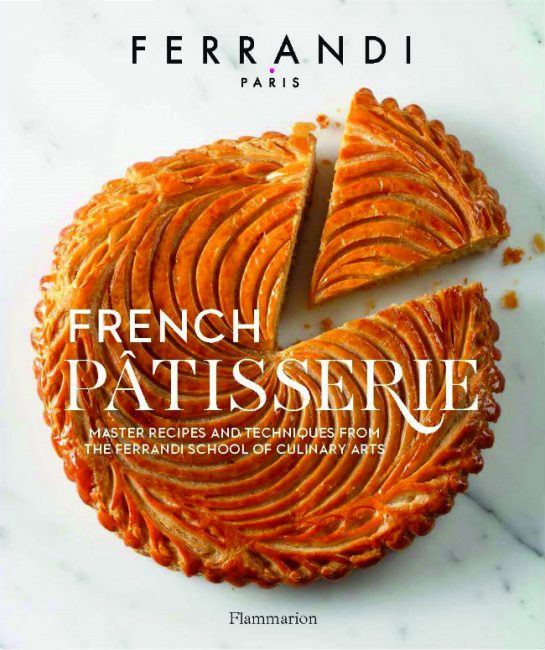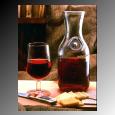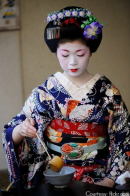Piece of Cake:
Interview with Bruno de Monte,
Director of Ferrandi Paris
For close to 100 years, Ferrandi Paris has whipped novices into world-class chefs and pâtissiers. As the prestigious School of Culinary Arts releases its first pastry book in English, director Bruno de Monte takes us behind the scenes at the ‘Harvard of Gastronomy’ – and shares his favourite recipes
France Today: Pâtisserie is often considered to be at the top of the baking hierarchy: out of the reach of most home bakers and rather daunting. Has pâtisserie been given an unfair rap all these years?
Bruno de Monte: I call our students “engineers” and so do their teachers. Pâtisserie is an engineering job: everything is measured and weighed. It’s extremely precise – a gram is a gram. There is a lot more room for interpretation in gastronomy than there is in pâtisserie. Perhaps not high-end gastronomy – which requires unbelievable technique and precision – but at least home, or more common and simple forms of, cooking.
But there is also a part of creativity. There has been a design boom recently and we’re seeing works of art with great aestheticism emerging. You have to marry both; it’s not easy.
FT: How was the book put together and by whom?
BdM: We put the book together as a committee. Seven professors, pastry chefs of different horizons, were involved. And the initial idea for us was: what are the most emblematic recipes, and what are the fundamental techniques that are needed to prepare them? It took two years to put it all together in the end – the professors had to teach occasionally as well! There were long discussions involved. It’s quite an endeavour.
FT: For a comprehensive step-by-step guide to pâtisserie, the book is surprisingly accessible and takes readers back to basics before building up to complex recipes. Is the aim of the book to ‘democratise’ pâtisserie?
BdM: We are a school first and our job is to train students, to help them progress and improve. We take novices and gradually help them master increasingly complex techniques. So we applied this teaching approach to our book. It’s progressive, without turning into a dull school manual.
Our recipes are spread over three levels. The first stage has classic, basic recipes, the second puts a slightly more complex twist on the same recipes and the third stage demands a lot more mastery. These final recipes are from our partners: great pâtissiers and chocolatiers offering their own take on these classics, like Pierre Hermé, Pierre Marcolini and Christophe Michalak.
The idea is that eventually readers will attempt Level 3. But we wanted it to be a practical book, for the whole family. If children pick up the book, they should be able to make a simple cake. And part of it was going back to basics. It’s like with music; before you can compose, you need to learn your scales. Here, you need to learn to master the fundamentals of pastry.
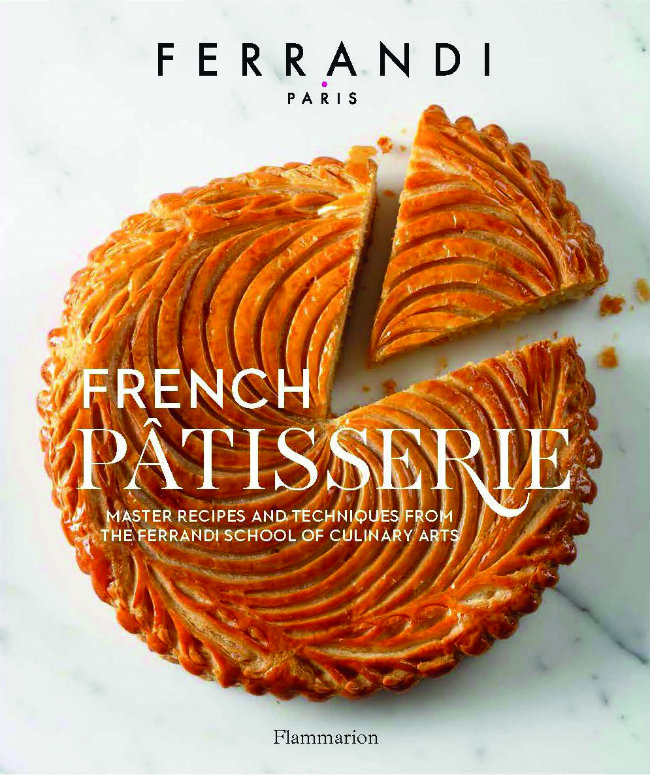
FT: Did you get to sample all the recipes at the various stages of the process for ‘quality control’?
BdM: I have a very sweet tooth so I tried everything – and put on 15kg… Just kidding. These are all tried-and-tested recipes, which we already teach and love. They’re delicious. I can vouch for every last one of them.
FT: What is your péché mignon (guilty pleasure) in the book?
BdM: I love jam and I love the fact that we included some jam recipes in the book. They’re very creative. And I adore tarts – the lemon tart is my favourite.
FT: The Ferrandi School has been dubbed the ‘Harvard of Gastronomy’ and, as one of the most exclusive cookery schools in the world, you receive thousands of applications each year. What does it take for a prospective student to make the cut?
BdM: Motivation. It’s hard to gauge talent from an interview or a candidate’s application, but motivation gives you a good inkling of potential and someone’s potential longevity in the industry.
And there’s knowledge of course. We don’t expect them to be professional before they’ve even enrolled but we want to know that there’s an interest there, that they’ve done their research and have perhaps done work experience in a kitchen already. We want to know that they’ve got a career plan, a long-term project. We want to see that they’ve thought it through and put the effort and time in.
Depending on the course, we may have four applicants for each place; for others we have 18 or 19 for each place, so it is quite competitive. We teach everything from gastronomy to hospitality and management. It’s a big enterprise.
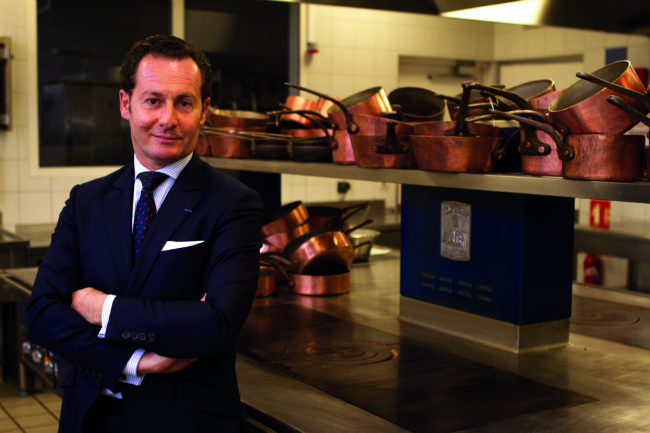
FT: What are some of the school’s greatest success stories?
BdM: Many students have gone on to become one-, two- and three-Michelin star chefs. The only issue is that when I name-drop some and not others the ones I left out get cross! There’s Amandine Chaignot, who is working at Rosewood in London; Adeline Grattard, who received a Michelin star; Nina Métayer, who now works as pastry chef at Café Pouchkine. But we are proud of everyone!
FT: Many of your new star students are women, in an industry that is (or at least has historically been) male-dominated. Is the face of the industry changing and the gender gap finally closing up?
BdM: It was historically a male profession but we’ve seen a real change in the last six or seven years, mainly due to the popularisation of the profession by TV cookery shows and in the media. It’s true that our pre-Baccalaureate level students tend to be predominantly male but post-Baccalaureate, we have 52 per cent of male students and 48 per cent of female students. So the balance is tipping steadily. And if these women remain in the industry, in a few years we will see a huge feminisation of the sector.
FT: What is a typical day for a Ferrandi apprentice?
BdM: It’s pretty intense. Every course is very practical. Students don’t spend all day watching demonstrations, making notes or taking photos on their smartphone. We have about 30 pastry kitchens and labs. Our campus covers 20,000 square metres in the 6th arrondissement (we are the biggest European centre of its kind) and each student has his or her own cooking station and oven. We want it to be as hands-on as possible.
Every day starts at 7.30am– and even earlier for boulangers. In the morning, they have four hours of hands-on cooking or baking. Then there are general classes. We teach law, finance, management… We also have two restaurants where students can apply what they’ve learned and get a taste of a professional kitchen environment – and which are also managed by the students themselves. They finish at around 5pm or 6pm. These are packed working days. But you’d be surprised. We have passionate students who keep asking for more. We have to send them home at the end of the day!
FT: Do you bake?
BdM: My background is not in gastronomy but I enjoy baking. I love to eat and I find baking relaxing but I’m nowhere near as talented as my teachers. I have to admit they gave me a bit of a complex. Before I got this job I thought I was an excellent amateur pâtissier. It was a rude awakening! I realised there was a lot of room for improvement. So the book is ideal for me; I’m progressing along with the readers.
FT: What advice would you give to amateur bakers dreaming of taking their passion to the next level and perhaps going professional?
BdM: Give it a try. I always advise prospective students to practise at home, get work experience in a bakery or restaurant, and get a feel for the job. You have to be passionate and prepared; it’s not an easy industry. For some people, it should just stay a hobby, and that’s fine too. But if they are really motivated and serious about it, I’d say, above all, don’t give up. Every job takes time, effort and determination and you can’t give up easily.
The recipes below are excerpted with permission from French Pâtisserie: Master Recipes and Techniques from the Ferrandi School of Culinary Arts by Ferrandi Paris, published by Flammarion, £45. Photography © Rina Nurra. Purchase the book on Amazon below.
BABA ISPAHAN
by Pierre Hermé, Best Pastry Chef in the World, 2016
Serves 6-8 | Active time 2 hours | Rising time 45 minutes | Cooking time 25 minutes | Standing time 48 hours | Chilling time 2 hours | Overnight storage up to 24 hours in the refrigerator
EQUIPMENT
Stand mixer fitted with dough hook and whisk attachments
Instant-read thermometer
7in (18cm) savarin mould or Bundt pan Non-stick cooking spray
Stick blender
Glucose decorating bag
2 pastry bags fitted with a plain 1⁄2in (14mm) tip and a Saint-Honoré tip
2 × 8in (21cm) crimped disposable gold plates
INGREDIENTS
For the baba dough
3⁄4 oz (20g) fresh (compressed) yeast
3 1⁄2 oz (100g) pasteurised whole egg
4 oz (120g) fine-milled soft wheat flour
1 oz (30g) super fine sugar
2 1⁄2 oz (70g) best-quality butter
1⁄4 tsp (2g) Guérande salt
For the rose-flavoured mascarpone cream
1⁄4 tsp (3g) fish gelatin powder 200 bloom
4 1⁄4 tsp (21ml) cold mineral water
1 1⁄4 oz (35g) pasteurised egg yolk
1 1⁄2 oz (40g) super fine sugar
2/3 cup (150ml) whipping cream, 35% butterfat 53⁄4 oz (165g) mascarpone
4 tsp (20ml) rose syrup
1⁄4 tsp (2ml) rose petal extract
For the raspberry and rose baba steeping syrup
2 1⁄2 cups (600ml) mineral water
9 oz (250g) super fine sugar
Scant 1⁄2 cup (100g) raspberry purée
Scant 1⁄2 cup (100ml) rose syrup
1⁄4 tsp (3ml) rose petal extract
Scant 1⁄4 cup (50ml) raspberry eau de vie
Steeping the baba
Steeping syrup (see above)
2 tbsp (30ml) raspberry eau de vie
For decoration
2 3⁄4 oz (75g) pieces of lychee
14 oz (400g) rose-flavoured mascarpone (see above)
7 tsp (35ml) raspberry eau de vie
Clear neutral glaze
4 1⁄4 oz (120g) raspberries
10 rose petals
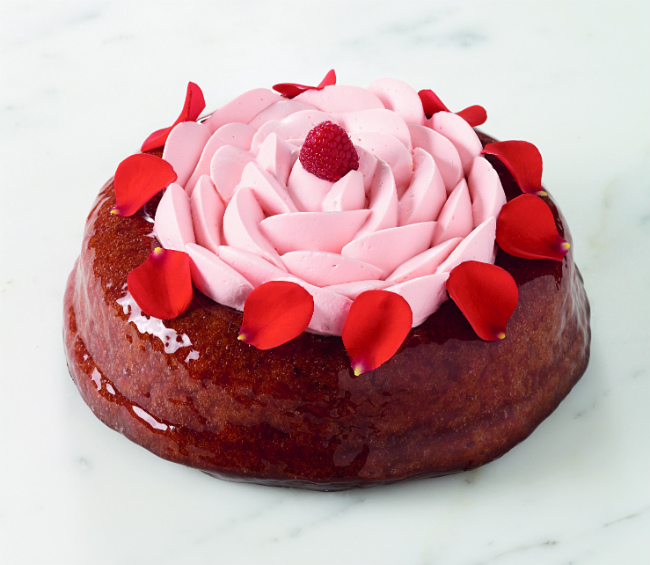
Making the baba dough
Dilute the yeast in 3⁄4 of the egg in the bowl of the stand mixer and add the flour and sugar. Mix at low speed to a smooth dough. Increase the speed to medium for 5 minutes and add the remaining egg. Continue to mix until the dough begins to pull away from the sides of the bowl and reaches a temperature of 77°F (25°C). Add the butter and salt and mix at medium speed until the dough pulls away from the bowl again and slaps against the sides (79°F/26°C). Grease the mould with non-stick spray. Shape 9oz (250g) of dough by hand, making a hole in the centre, and place in the mould. Tap the mould on a work surface a few times to remove air bubbles. Cover, and let rise at 90°F (32°C) for about 45 minutes. Preheat the oven on convection setting to 325°F (170°C/Gas Mark 3) and bake for 20 minutes. Unmould and put the baba back in the oven for 5 minutes. Remove and let it dry out for 2 days at room temperature. Store in an airtight container.
Making the rose-flavoured mascarpone cream
A day ahead, soak the gelatin in the water for at least 20 minutes. Whisk the egg yolk with the sugar until pale and thick. Bring the cream to a boil and gradually whisk it into the yolk mixture. Pour back into the pan and heat to 185°F (85°C), as for a custard. Squeeze excess water from the gelatin and add, along with the mascarpone, rose syrup, and rose extract. Blend until smooth. Press plastic wrap over the surface of the cream and refrigerate overnight in an airtight container.
Making the raspberry and rose baba steeping syrup
Bring the water, sugar and raspberry purée to a boil. Add the rose syrup, extract, and raspberry eau de vie. Remove from the heat and let cool. Use at 122°F (50°C) or set aside in the fridge.
Steeping the baba
In a large saucepan, heat the steeping syrup to 122°F (50°C). Immerse the baba, turning it over and basting with syrup from time to time. Once the baba is thoroughly soaked, lift it from the pan with a skimmer and place on a wire rack over a baking sheet. Baste generously with the raspberry eau de vie. Let drain and chill for 2 hours.
Assembling the baba
Drain the lychee pieces thoroughly in a fine-mesh sieve. In the bowl of the stand mixer fitted with the whisk, beat the rose mascarpone cream until stiff. Stick the 2 plates together using glucose from the decorating bag. Baste the baba generously with the raspberry eau de vie and chill. Brush the chilled baba with warm glaze, ensuring it is not too hot, or the glaze will not be absorbed. Divide the mascarpone cream between the 2 pastry bags. Place the baba on the gold plates and, using the pastry bag with the plain tip, pipe mascarpone cream halfway up the inside of the cake. Sprinkle the chopped lychees and whole fresh raspberries generously over the cream. Cover the fruit with cream, creating a slight dome shape. Using the bag with the Saint-Honoré tip, pipe flame shapes on the baba in a circular pattern, working from the outside toward the centre of the cake. Arrange the rose petals around the piped cream, and place a fresh raspberry in the centre.
LEMON MERINGUE TART
Tarte au Citron Meringuée
Serves 6 | Active time 1 1⁄2 hours | Chilling time 1 1⁄2 hours | Freezing time 1 1⁄2 hours | Cooking time 15-20 minutes | Storage up to 2 days in the refrigerator
EQUIPMENT
Stick blender
Half-sphere moulds, diameter 11⁄4in (3cm)
Stand mixer (for making the Italian meringue)
9in (23cm) tart ring or pan with a removable base
Instant-read thermometer
2 pastry bags fitted with plain 1/3in (10mm) and 1⁄2in (15mm) tips
INGREDIENTS
For the lemon jelly
1/3 cup (95ml) fresh lemon juice
2 tbsp (30ml) water
1 1⁄2 tsp (6g) sugar
1/8 oz (3g) agar-agar
For the lemon-flavoured sweet short pastry
5 tbsp (21⁄2oz/75g) butter, diced, at room temperature, plus extra for the ring
1/3 cup (11⁄2oz/40g) confectioners’ sugar
2 1⁄2 tbsp (1⁄2oz/15g) almond flour
1/8 tsp (1g) salt
1 tsp (5g) grated lemon zest
2 tbsp (1oz/30g) lightly beaten egg (about 1 egg)
1 cup (41⁄2oz/125g) flour
For the lemon cream
2/3 cup (150ml) fresh lemon juice
2/3 cup (51⁄4oz/150g) lightly beaten egg (3 eggs)
Scant 2/3 cup (41⁄4oz/120g) sugar
1 1⁄2 sheets (1/8 oz/3g) gelatin
5 tbsp (23⁄4oz/75g) butter, diced, at room temperature
For the Italian meringue
1 cup (7oz/200g) super fine sugar
1/3 cup (80ml) water
Scant 1⁄2 cup (31⁄2oz/100g) egg white

Making the lemon jelly
Heat the lemon juice, water, and sugar in a saucepan until the sugar dissolves. Bring to a boil, stir in the agar-agar and let boil for 2 minutes. Process with the stick blender and then pour the mixture into the moulds. Freeze for 1 hour.
Making the sweet short pastry
Fit the stand mixer with the paddle beater and add the butter, confectioner’s sugar, almond our, salt, and grated lemon zest to the bowl. Mix to combine. Beat in the egg and then the flour. When the ingredients come together in a ball, flatten the dough into a disk, cover with plastic wrap, and chill in the refrigerator for 30 minutes. Butter the tart ring lightly and line it with the pastry. Place in the freezer to chill for about 20 minutes. Preheat the oven to 325°F (170°C/Gas Mark 3) and blind bake for about 20 minutes. Allow to cool before assembling the tart.
Making the lemon cream
Put the lemon juice, eggs, and sugar in a heatproof mixing bowl. Stand the bowl over a pan of hot water and whisk constantly until the mixture has thickened. Meanwhile, soak the gelatin sheets in a bowl of cold water.
When the lemon mixture reaches 140°F (60°C), remove the bowl from the heat. Squeeze the water from the gelatin sheets and stir in until dissolved. Add the butter and process with the stick blender until completely smooth. Press plastic wrap over the surface of the cream and chill for 1 hour.
Making the Italian meringue
Dissolve the sugar in the water and boil to 240°F-250°F (116°C-121°C) – the exact temperature will depend on the type of meringue you need. When the temperature of the syrup reaches 230°F (110°C), begin whisking the egg whites in the stand mixer at high speed.
When the required temperature of the syrup is reached, very carefully pour it over the partially whisked egg whites in a thin, steady stream, taking care not to let it touch the beaters, and whisking continuously. Reduce to medium speed after 2 minutes. Whisk until the mixture has cooled completely.
Assembling the tart
Pour the lemon cream into the cooled tart crust, filling it to the rim but reserving a little to decorate the top of the tart, and smooth the top with a spatula or palette knife. Freeze for 20 minutes.
Place the remaining lemon cream in a pastry bag fitted with the 1/3in (10mm) tip and pipe small mounds in the centre of the tart. Using the 1⁄2in (15mm) tip, pipe the Italian meringue in large mounds around the edge (see Chefs’ Notes). Unmould the lemon jelly domes and place on the meringue mounds.
Chefs’ notes for the lemon meringue tart
When you have piped the mounds of meringue, place the tart in a 475°F (250°C/Gas Mark 9) oven for 3-5 minutes, until the meringue is lightly coloured and set.
Chefs’ notes for the Italian meringue
For this method, the meringue is cooked by incorporating cooked sugar, followed by a few minutes in the oven to lightly brown it. The egg whites must be whisked until they are frothy, so as to produce a smooth, glossy meringue.
If the meringue is to be incorporated into a mousse, the required temperature depends on how fragile the mousse ingredients are. For a chocolate mousse, it should be between 113°F and 122°F (45-50°C) and for a fruit mousse, between 95°F and 100°F (35-40°C).
For creamy mixtures being ‘lightened’ with meringue, incorporate the meringue at 75°F (25°C), particularly if the mixture contains butter, such as a praline buttercream.
STRAWBERRY TART
Tarte aux Fraises
Serves 6 | Active time 1 hour | Chilling time 30 minutes | Freezing time 10 minutes | Cooking time 30 minutes | Storage up to 24 hours in the refrigerator
EQUIPMENT
Stand mixer
9in (23cm) tart ring or pan with a removable base
2 pastry bags fitted with plain 1⁄2in (15mm) tips
Electric hand beater
Instant-read thermometer
INGREDIENTS
For the sweet short pastry
3⁄4 cup plus 2 tbsp (31⁄2oz/100g) flour
2 1⁄2 tbsp (1⁄2oz/15g) almond flour
1/3 cup (11⁄2oz/40g) confectioners’ sugar
Scant 1/8 tsp (1g) salt
4 tbsp (2oz/60g) butter, diced
1⁄2 tsp (3g) vanilla extract
1 tbsp plus 1 tsp (3⁄4oz/20g) lightly beaten egg (about 1⁄2 an egg)
For the almond-pistachio cream
4 tbsp (2oz/60g) butter, diced, at room temperature
Scant 1/3 cup (2oz/60g) sugar
Scant 1/3 cup (2oz/60g) almond flour
1 oz (25g) pistachio paste
3 1⁄2 tbsp (13⁄4oz/50g) lightly beaten egg (1 egg)
For the pastry cream
1⁄2 cup (125ml) milk
2 tbsp (7/8 oz/25g) sugar
1 vanilla bean
1 1⁄2 tbsp (1oz/25g) egg yolk (about 11⁄2 yolks)
1 tbsp plus scant 1 tsp (1⁄2oz/12g) cornstarch
1⁄2 oz (15g) plain (all-purpose) flour
1 tbsp plus 1 tsp (3⁄4oz/20g) butter
For the strawberry jelly
2 sheets (1/6oz/4g) gelatin
2 oz (60g) strawberry purée
2 tbsp (30ml) water
2 tbsp (30ml) strawberry syrup
3 1⁄2 tbsp (1oz/30g) glucose syrup
For decoration
1 lb 2 oz (500g) strawberries
3⁄4 oz (20g) unsalted, skinned pistachios, roughly chopped

Making the sweet short pastry
Fit the stand mixer with a paddle beater and combine the flour, almond flour, confectioners’ sugar and salt in the bowl. Add the butter and beat until the mixture has a crumbly texture, like coarse bread crumbs. Beat in the vanilla and egg until just combined. Shape the dough into a disk, cover with plastic wrap, and chill for 30 minutes. Line the tart ring with the pastry and freeze for 10 minutes.
Making the almond-pistachio cream
Preheat the oven to 325°F (170°C/Gas Mark 3). Beat the butter with a spatula until creamy. Add the sugar, almond flour, pistachio paste and egg and beat until very smooth. Spoon the mixture into a pastry bag and pipe it over the base of the tart. Bake for 30-35 minutes and allow to cool.
Making the pastry cream
Combine the milk and half of the sugar in a saucepan. Scrape in the seeds of the vanilla bean and bring to a boil over medium heat. Meanwhile, whisk the egg yolk with the remaining sugar in a mixing bowl until blended and slightly thickened. Sift the cornstarch and our into the egg mixture and whisk until combined. As soon as the milk comes to a boil, slowly pour it onto the egg and starch mixture, whisking constantly. This will loosen the mixture and heat it a little. Return to the pan and bring to a boil over medium heat, whisking vigorously. Continue to boil, still whisking, for 2-3 minutes. Remove from the heat and stir in the butter until smooth. To cool quickly, line a baking sheet with plastic wrap and spread the cream over it. Press another piece of plastic wrap over the surface of the cream.
Making the strawberry jelly
Soak the gelatin in a bowl of cold water until softened. Heat the purée, water, strawberry syrup, and glucose in a saucepan to 122°F (50°C). Squeeze the excess water from the gelatin sheets and stir into the hot strawberry mixture until completely dissolved. Remove from the heat.
Assembling the tart
Spoon the pastry cream into a pastry bag and pipe it into the tart crust so the baked almond- pistachio cream is completely covered. Slice the strawberries in half and arrange them in circles on top of the tart, with a whole strawberry in the centre. Brush the warm strawberry jelly carefully over the strawberries and scatter with the chopped pistachios.
From France Today magazine

